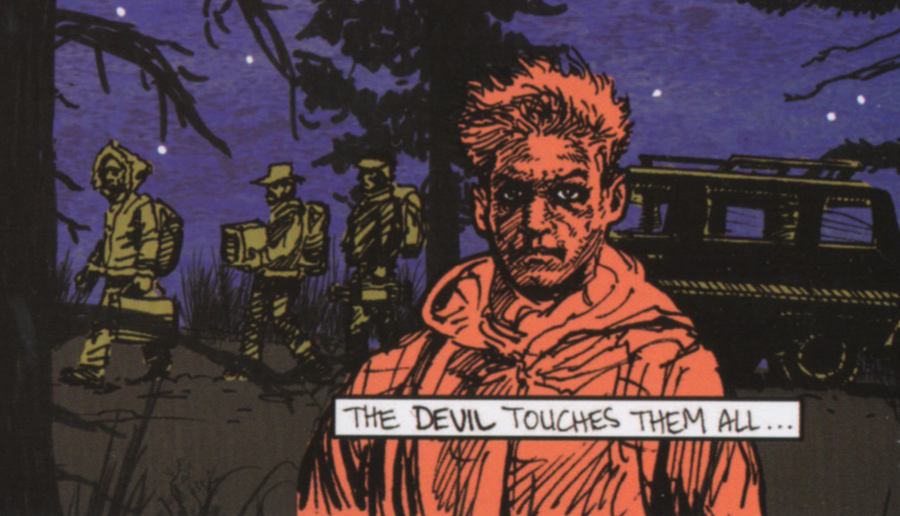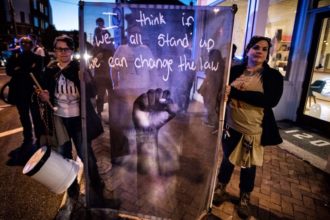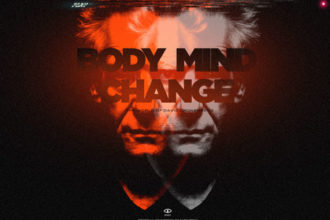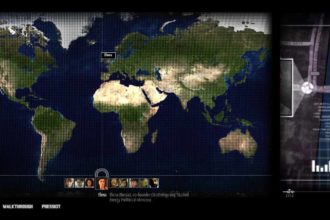The Last Broadcast
Title: The Last Broadcast
Status: 1998
Type of Project: Feature Film with early website and ARG (alternate reality gaming) tactics
My Role: Co-Writer, Co-Director, Co-Producer, Actor and Distributor
Project Description: Bristling with equipment, two enthusiastic local access cable TV producers recruit two assistants and venture into the woods in search of the mythical and horrifying Jersey Devil. Days later, only one of the group emerges. He becomes the prime suspect in the murder of the other three. However, a documentary filmmaker examines extensive footage found at the scene and arrives at a different conclusion.
The Last Broadcast would go on to make cinematic history in 1998 by becoming the first digital release of a motion picture to reach theaters via satellite. The movie was transmitted to a geosynchronous satellite and then downloaded onto hard drives and projected with state of the art digital projection. After turning down studio offers, Weiler and team founded Wavelength Releasing and established a DVD label and theatrical distribution arm. The Last Broadcast to date has grossed over 5 million dollars and is available in 20 countries around the world.
Press: Forbes, Wired Magazine
Stats:
– Made for $900
– Grossed 5 million dollars via self-distribution
– First all digital release of a motion picture to theaters
– Available in 20 countries around the world
– Aired on HBO and IFC
– Comic for re-release drawn by Stephen Bissette (Swamp Thing & Constantine) – see featured image in this post
What People Are Saying
A gritty Thin Blue Line meets Blow Up investigation of two public-access TV show hosts murdered in New Jersey… Avalos and Weiler boldly go where no filmmaker has gone before. – WIRED
A slick thriller. There is betrayal, death and a twisty climactic frisson in this dark, media mauling parable. – TIME
Originally published by

Sam Goldwyn on $900
FRANCIS FORD COPPOLA once said there would come a day when some little fat girl from Ohio could borrow her dad’s camcorder and become the next Mozart of moviemaking.
The day has arrived. Only the fat girl is two young male nobodies from rural Pennsylvania, whose debut feature, The Last Broadcast, is making cinematic history. The 90-minute murder mystery was shot on borrowed digital cameras costing as little as $1,000 and edited in a farmhouse with off-the-shelf Adobe software and a 166-megahertz PC. The movie is the first digital picture to be released nationally via satellite, thereby completely bypassing both the crippling costs of conventional film and Hollywood’s mighty distribution machine.
The beginning of the digital cinema revolution? The Last Broadcast’s producers, lanky Lance Weiler, 28, and his goateed partner Stefan Avalos, 30, think so. The two gonzo filmmakers made their movie for $900. The film, which played in art houses in cities such as Philadelphia, Minneapolis and Portland, Ore., has grossed $18,000 so far.
There have been ultra-low-budget winners before — notably, 1994′s Clerks. But even that cult film consumed a fair amount of costly celluloid. Weiler and Avalos figure they would have spent $200,000 for 16mm.
The young producers got some help. Satellites and digital projectors for The Last Broadcast’s Oct. 23 premiere were lent at no charge by Loral’s Cyberstar, Digital Projection Inc. and Texas Instruments. The movie was encoded, beamed to a satellite 22,300 miles up, bounced back to dishes atop the theaters, piped into a Windows server and then shown on digital projectors featuring Texas Instruments’ Digital Light Processing.
The Last Broadcast wasn’t just a technological feat. Beating out movies made for $1 million on 35mm, it won a silver jury prize for best feature from the Chicago Underground Film Festival and got 31/2 stars out of four from the Philadelphia Inquirer’s movie critic, Steven Rea.
“Filmmakers don’t need to be financiers anymore,” says Peter Broderick of Next Wave Films.
Digital filming and projection have long been considered subpar in Hollywood. The dimensionless, muted images couldn’t rival film’s lush textures and crisp contrasts. But better cameras and new video projection systems like the ones used by Weiler and Avalos are now beginning to boast images that some say rival those of traditional 35mm film. Digital’s bargain-basement costs have made prominent filmmakers like Henry Fool director Hal Hartley and Breaking the Waves director Lars von Trier use the technology. Two recent hits, Thomas Vinterberg’s The Celebration and Bennett Miller’s The Cruise, were both shot on digital cameras and then transferred to 35mm prints for wide-scale release.
This is just the beginning. George Lucas is hoping to film the next two installments of Star Wars using digital cameras. The Sundance Film Festival is considering a digital category for its program in 2000.
Already a new festival called ResFest is devoted to digital movies. And, at its annual conference last month, the National Association of Movie Theater Owners discussed digital projectors.
The savings won’t stop with the filmmaking. Distributors spend millions striking film prints of a would-be blockbuster to ship to theaters. A digital transmission via satellite would cost around $150,000. By one estimate, Hollywood’s annual film costs of more than $400 million for 100 movies would be about $14 million in digital form.
Don’t look for any of this to happen overnight. Digital projectors are prohibitively expensive and theater owners have a lot invested in 100-year-old technology. But prices are falling fast.
Who needs theaters anyway? Weiler and Avalos have signed a deal with the Independent Film Channel to distribute their movie through its Broadband service over the Internet and through cable modems to customers’ homes. Says Weiler, “Everyone said we couldn’t do it. Now everyone in Hollywood’s calling to ask us how we did it.”







